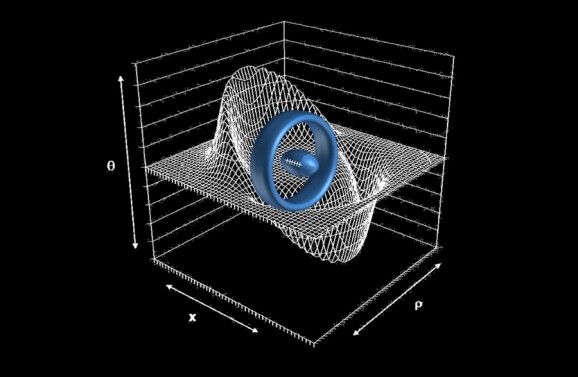Quantum-Thruster Physics May Be The Key To Warp Drives
This article is more than 2 years old

Faster-than-light technology is one of those sci-fi inventions that I frequently wish was reality (along with replicators). I’ll take a Battlestar Galactica-style FTL drive, a Babylon 5 jump gate, or a Star Trek-style warp drive. I mean, it’s cool that the speed of light is so pivotal, but wouldn’t it be awesome to go even faster than that? It’s one of those wishes that scientists generally predict won’t come true (at least any time soon), like time travel. I take great pleasure in saying that those scientists might be wrong.
I guess one good thing about NASA being out of the space shuttle business is that they have some time to work on other stuff, such as warp drives. And since we know NASA doesn’t have extra money kicking around, if they’re working on it, it must be possible…right?
For the record, a warp drive wouldn’t mean that the ship would actually travel faster than the speed of light — rather, the space-time around the ship would warp, as though the ship were effectively moving faster than light (up to 10 times faster, they think).
They’re currently working on a model that looks like two rings around a football. The rings would contract space-time in front of them, thus “warping” through space. How exactly are these rings supposed to do that? Well, that is question, and that’s what they’re working on.
Scientists are looking at quantum-thrust physics to see if it could fuel a warp drive. “Q-thrusters” are like submarines — the electric thrusters cause quantum-level disturbances as they move through space.
The physics behind the construction of the q-thruster are the same as those behind something called a negative vacuum generator, which scientists believe could generate the “ring” around the spacecraft in their model. Scientists believe the negative vacuum energy could help power a warp-drive engine. Scientists have “perturb[ed] the state of the quantum vacuum” (don’t you love how scientists talk?), so they’ve got a start.
That sounds pretty hard to me, but fortunately, not all of our warp dreams hinge on that technique. NASA physicists are also experimenting with interferometry to see if they can generate the desired effect. Interferometry is a technique that allows light and/or electromagnetic waves to be collected by a series of small devices, such as telescopes, after which they overlap or superimpose and essentially get out of step with each other. Interferometers can measure the differences or alter the waves so they hit their target (again, such as a telescope) at the same time. For example, an interferometer can “delay” light by adding distance. They’re looking for changes in the length of a photon path — an indication of a shortened distance or a contraction of space-time.
Richard Obousy, president of Icarus Interstellar, says they “believe that during that inflationary period [the early epoch of the universe], space-time itself expanded at many times the speed of light.” And if space-time itself can do it, why can’t we?











